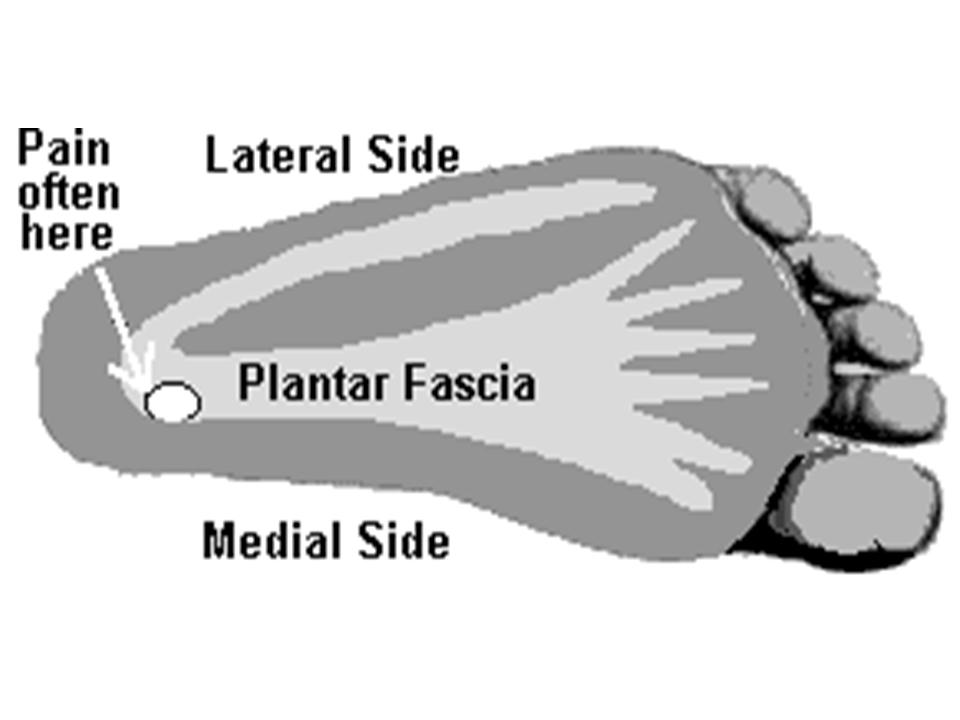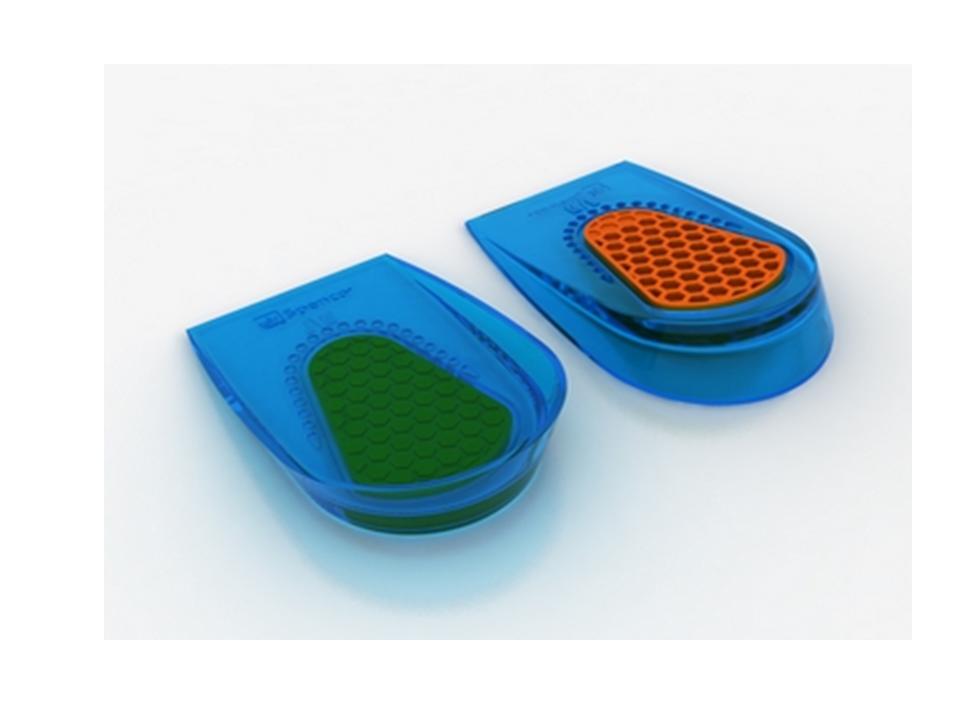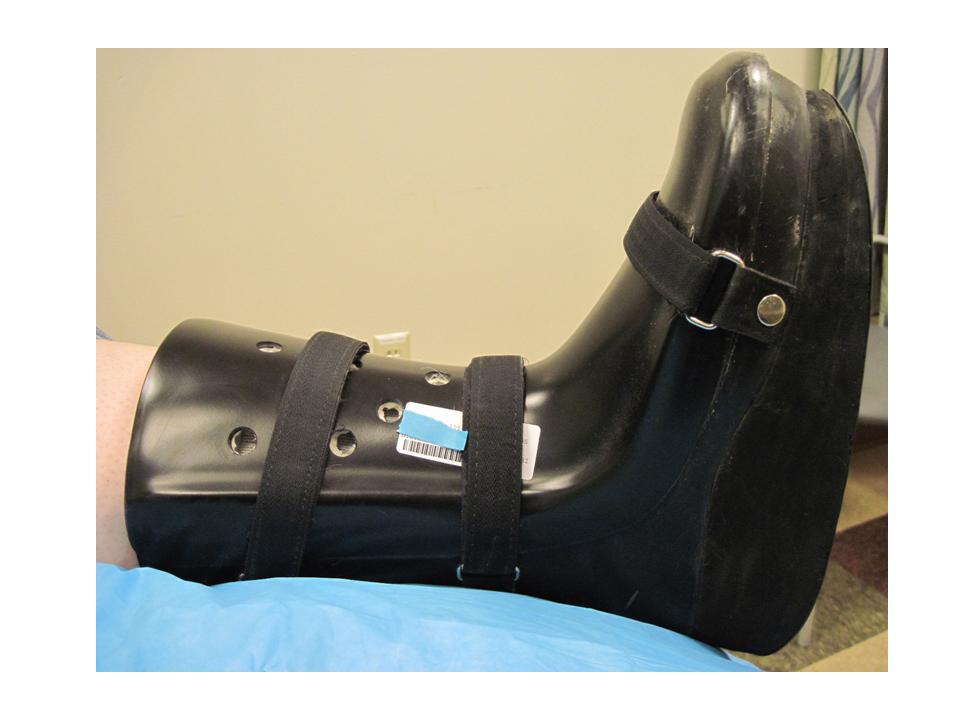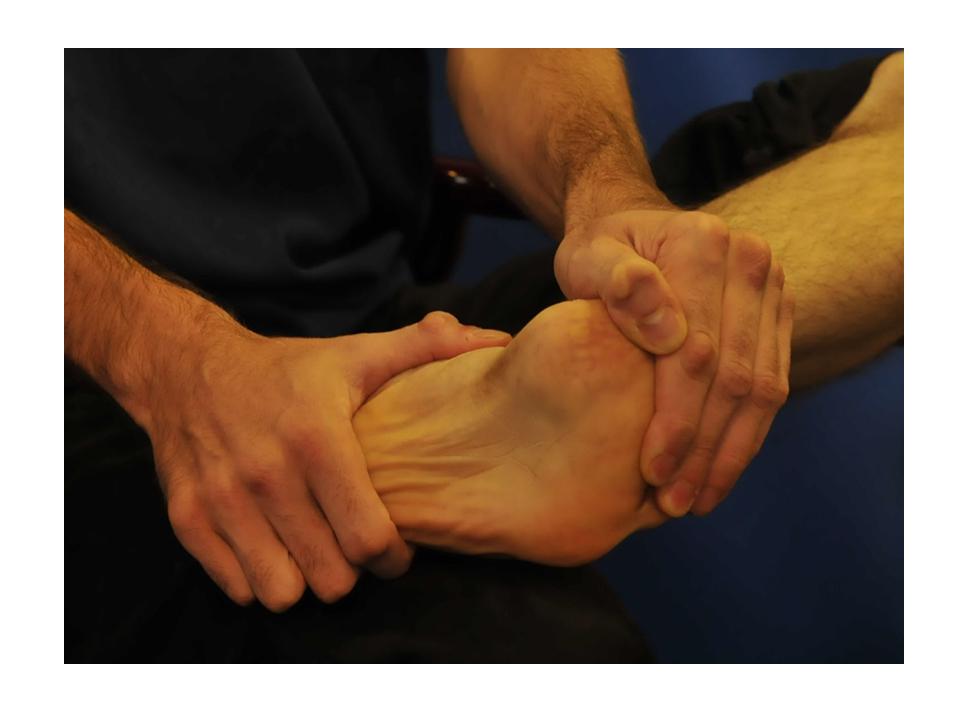News Letter, Vol. 3 (10), October, 2011, © Copyright
Jun Xu, M.D. Lic. Acup., Hong Su, C.M.D., Lic. Acup.
Robert Blizzard III, DPT
Rehabilitation Medicine and Acupuncture Center
1171 East Putnam Avenue, Building 1, 2nd Floor
Greenwich, CT 06878
Tel: (203) 637-7720
Heel and Foot Pain
literunner.com
Jennifer is a 55 year-old, moderately obese woman. She runs every morning for about 4 to 5 miles, who complains of right heel and plantar foot pain, difficulty walking, especially in the morning after waking up from sleep for 2 years. She went to the podiatrist, who gave her an x-ray, which showed a mild heel spur at her heel. She was given orthotics for the right foot, but she still feels pain, therefore, she comes to me for evaluation and treatment.
By physical examination, there is tender point at right heel and arch. There is no ankle pain, no numbness nor tingling sensation at right leg. Based on my examination and clinical information, the patient most likely has right plantar fasciitis with possible heel spur.
There are two different concepts of plantar foot pain:
- Plantar Fasciitis: Plantar fasciitis is inflammation of the thick tissue on the bottom of the foot, i.e. the plantar fascia. It connects the heel bone to the toes and covers and supports the arch of the foot. The pain is located at the medial heel, however, if the pain is severe, it will spread out to entire foot arch.
- Heel Spur: A heel spur is a hook of bone that can form on the heel bone (calcaneus). A calcaneal spur (or heel spur) is a radiological (X-ray) finding, and when it is located on the inferior aspect of the calcaneus, is often associated with plantar fasciitis. However, sometimes, people may have heel spur without any pain, some people may have severe heel pain and the pain may mixed with plantar fasciitis to cause the entire plantar foot pain. An inferior calcaneal spur consists of a calcification of bone, which lies superior to the plantar fascia at the insertion of the plantar fascia, most common in the medial side heel of the foot.
Fig 10.1
Causes, incidence, and risk factors:
The most important key part of plantar fasciitis is overstretched or overused of the thick band of tissue on the bottom. This can be painful and make walking or running more difficult.
Risk factors for plantar fasciitis include:
- Obesity.
- High arches and/or flat feet.
- Overwalking or running, especially running downhill or on uneven surfaces
- Tight Achilles tendon, which is the tendon connecting the heel to the calf muscles.
- Hard surface of the shoes, especially tight and hard shoes without any arch support or Cushing function.
- Men ages 40 to 70.
Symptoms:
The pain in the bottom of the foot usually is sudden onset with most often sharp or burning sensation, sometimes you may feel dull pain.
The pain is usually worse:
- In the morning when you take your first steps
- After sitting or standing for a while
- When climbing stairs or walking on uneven surfaces
- After intense activity
The pain usually feels better after you warm up with first steps or take hot shower. The pain may develop slowly over time, or suddenly after intense activity.
Signs and Tests:
The doctor will perform a physical exam. This may show:
- Tenderness on the bottom of your foot, usually at the medial heel and entire arch.
- Flat feet or high arches
- Mild foot swelling or redness
- Stiffness or tightness of the arch in the bottom of your foot.
X-rays may be taken to rule out other problems, but having a heel spur is not significant.
Fig 10.2
http://spinalphysio.kornberg.net/heel_spurs.gif
Treatment:
- Anti-inflammatory medications: Acetaminophen (Tylenol), or ibuprofen (Advil, Motrin) to reduce pain and inflammation.
- Rest- At least rest for one week or more, no running, no long walking.
- Ice: apply ice to your bottom of the feet for at least 15 min, 2 to 3 x per day.
- Wearing shoes with cushions, custom made shoe insole and heel cups. Boot cast, night splint
Arch Support
Fig 10.3
plantar-fasciitis-fix.com
Fig 10.4
the-good-doctor.net
Fig 10.5
myfootshop.com
Fig 10.6
bannertherapy.com
Fig 10.7
feetinsoles.com
Fig 10.8
foot-pain-store.com
Fig 10.9
woundblog.com
- Physical therapy
Fascia-specific stretching exercise by gently pulling back the toes for 10 sets of 10 seconds. Repeat 3 times a day.
Fig 10.10
Fig 10.11
Another exercise targeted at the plantar fasciia and strengthening the small muscles of the foot is marble pick-ups. Place a handful of marbles on the floor and pick them up using the toes and place in container. Repeat for a total of 3-5 minutes. If marbles are not available, the same motion can be performed using a towel.
Fig 10.12
The use of anti-inflammatory properties of ultrasound targeted to the bottom of the heel is beneficial. A typical treatment would be around 8 minutes and can be performed by your physical therapist.
- Acupuncture
The following acupuncture points are selected: experienced points (Arshi points), Ki 1 Yong Quan, Sp 9 Ying Ling Quan, GB 34 Yang Ling Quan,
| Points | Meridian/No. | Location | Function/Indication | |
| 1 | Arshi Points | As indicated | For local pain | |
| 2 | Yong Quan | Ki 1 | On the sole, in the depression when the foot is in plantar flexion, approximately at the junction of the anterior third and posterior two thirds of the sole | Headache, blurring of vision, dizziness, sore throat, dryness of the tongue, loss of voice, dysuria, infantile convulsions, feverish sensation in the sole, loss of consciousness |
| 3 | Ying LingQuan | Sp 9 | On the lower border of the medial condyle of the tibia, in the depression on the medial border of the tibia | Abdominal pian and distension, diarrhea, dysentery, edema, jaundice, dysuria, enuresis, incontinence of urine, pain in the external genitalia, dysmenorrheal, pain in the knee |
| 4 | Yang Ling Quan | GB 34 | In the depression anterior and inferior to the head of the fibula | Hemiplegia, weakness, numbness and pain of the knee, beriberi, hypochondriac pain, bitter taste in the mouth, vomiting, jaundice, infantile, convulsion |
Fig 10.13
- Steroid injection: Steroid injection sometimes may make a significant improvement. However, you should use is cautiously, because the steroid may cause necrosis of the plantar foot.
- Surgery: Last resort.
Jennifer’s Treatment:
Jennifer was advised to stop running immediately. In the meantime, she was given heel pad with two layers of shoe insoles, and changed to a bigger size of snickers. She was given above acupuncture treatment and physical therapy stretch exercise 3x per week for 4 weeks. She also stretch her foot and perform ice massage 3 to 4 x per day. Her plantar faciitis was completely healed. She run again after 2 months.
Tips for Patients:
- Early treatment, the earlier, the better.
- Always use two layers of shoe insoles to cushion your inflamed foot.
- Rest and ice massage
Tips for Acupuncturists:
- Arshi 1 and Arshi 2 are most important points to reduce plantar pain.
- Use electrical stimulation to desensitize the plantar foot pain.
- Encourage your patients to use shoe insoles, two layers are better than one layer.
- Try not to use steroid injection.














